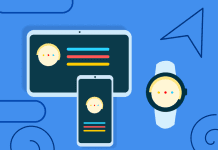A proper sleeping pattern has been proven to provide tons of health benefits: Better heart function, higher hormonal maintenance and control and faster cell repair. It also boosts memory and improves cognitive function in both kids and adults. Naps aren’t for everyone, but they can provide huge benefits to your daily production at work throughout the day if you learn how and when to use them.
It was found that Japanese and Americans reported sleeping 30-40 minute less on workdays than those in other countries surveyed by the National Sleep Foundation. This lack of sleep can drastically affect the amount of work you can achieve during the day and hinder your ability to think analytically and spatially.
Most of the time, this sleep-deprived lifestyle is out of our control. Working the long hours is expected in distinctively hard-working cultures that encompass a “work-until-you-can’t-anymore” kind of mentality. So whats the answer?
Take a nap.
Napping can help you live longer, stay more active and keep you looking younger. Studies have shown how napping has a great improvement on cognitive function, creative thinking and performance. One study also proved that naps can have a physical benefit. 23,681 Greek men were observed over three years while they napped three times a week. It was concluded that the men had a 37% lower risk of dying from heart disease.
Sleep experts say that daytime naps will help to increase alertness, boost creativity, reduce stress, improve perception, stamina, motor skills and accuracy, enhance your sex life, help you lose weight, and reduce the risk of a heart attack. They also enhance your personality by brightening your mood and quicken your cognitive processing function, which improves your social and conversational skills.
So how do you take a nap during the day?
There has been a cultural shift in napping where high-profile corporations like Google, Pfizer, Proctor & Gamble and Saatchi & Saatchi have incorporated “Energy Pods” into their work spaces. Airline pilots and traffic controllers have had sleep breaks scheduled into their routine for awhile now. When you’re sleepy, you’re seven times more likely to make a mistake, so these types of jobs depend on alert employees who are always aware of the decisions they’re making.
This translates to every job, and no matter what kind of work you’re doing, a nap will help you improve your productivity and keep your creative juices flowing. And if you’re at a company where naps have yet to be incorporated into the company schedule, find time at lunch to doze off the front seat of your car for 20 minutes. It’s that simple.
Fast Company gives four ways to get the most out of your daytime nap so you can work it into your daily routine and, ultimately, function at a higher level at work.
1. Figure out how long it takes you to fall asleep
You need to know how long until you’re in the “nap zone” in order to measure how long you need to sleep to have a nap thats actually worth taking. One way to do this is to use a sleep-tracking app or fitness tracker. Lifehacker gives their five best sleep tracking apps:
- FitBit One
- Sleep as Android
- Jawbone UP
- Sleep Cycle
- Sleepbot
Once you figure out how long it takes you to fall asleep, set your alarm how every many minutes past that point. An alarm is important because it gives you a safety net and lets you relax while you doze off. It eliminates the element of stress that you may sleep too long, which brings me to step two:
2. Don’t sleep too long
Sleeping too long can actually reverse the positive effects of your nap and leave you feeling tired and groggy. The main issue here is sleep inertia – the feeling of waking up even more tired than before you went to bed. Dr. Sara C. Mednick, author of Take a Nap! Change Your Life, says:
“Since the brain temperature and blood flow to the brain decrease during this sleep stage, it’s jarring to suddenly be awake and experiencing much higher rates of brain activity. There is no benefit to napping longer than 90 minutes, because you will only begin another sleep cycle. Further, if you take a snooze too late in the day, it will contain too much slow-wave sleep.”
The general consensus is to aim for a 15-20 minute nap early on in the day, and maybe even consume some sort of caffeine directly before so you can wake up with more energy. If this doesn’t seem plausible, you can take a full, 90 minute nap, but beware: Going over the time limit will cause you to enter another sleep cycle and leave you feeling more tired than when you fell sleep.
3. Nap during the day, not at night
Napping when you have the lowest energy levels is the key in regaining your energy. We have all seen the 5 Hour Energy commercials where you’re “feeling tired and groggy after lunch, and just need a boost”. This boost may temporarily help you, but the ultimate answer isn’t in a bottle, it’s in a pillow.
Our natural circadian rhythms give us two moments during the 24-hour lifecycle of the day where our tiredness peaks. One moment is in the middle of the night, the other is in the middle of the afternoon. If you’re lucky, you work at one of the few companies that promotes napping during the day. If not, maybe a quick lunch followed by a short snooze in the car will help refresh your brain and give you higher energy levels.
4. Practice, practice, practice
The only way to master something is to do it over and over again. Trying different techniques will help you find the best method that helps you fall asleep the fastest. Health.com says that eliminating annoying noises, preparing your body with relaxation techniques, finding the right room temperature and figuring out the best position of relaxation play the biggest roles in how quickly you fall asleep.
You could also try napping at different times of the day, figuring out what to eat at lunch before you go take your quick recharge, or waking up slightly earlier before you go to work. Naps are best taken six to eight hours after waking up, so setting your morning alarm in accordance with your napping schedule will help you fall asleep quicker and improve the impact of your nap.
Trevor Micklow is a business writer and content curator based out of Chicago, IL. US. He specializes in digital strategies, social media, psychology, executive education and business school related topics. He has been working and coordinating the general content of IntelligentHQ’s business school directory, which gives key information and programme details on the top business schools in the world. He has a BS, Psychology from Central Michigan University.

























